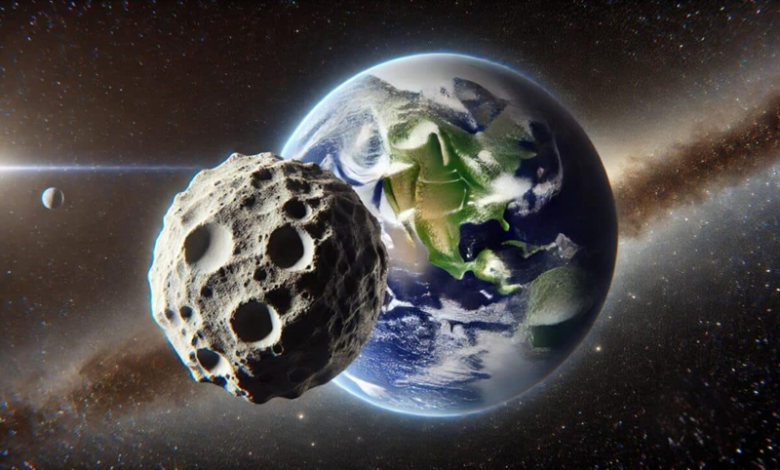Everything to know about Earth’s mini moon

News Mania Desk/ Piyal Chatterjee / 24th September 2024
A mini-moon is going to make an unexpected visit to Earth, but keep an eye out or you might miss it. A tiny asteroid called 2024 PT5, which will briefly be attracted to Earth and orbit it for a mere two months before vanishing into space, has recently been found by astronomers.
This brief appearance of the mini-moon will begin on September 29 and end on November 25.
The Research Notes of the American Astronomical Society have released information about the asteroid, including its short duration of observation, its horseshoe-shaped trajectory, and more. The asteroid was first detected on August 7 by NASA’s Asteroid Terrestrial-impact Last Alert System (ATLAS). Additional information is required to confirm the asteroid’s size, however it is estimated to be roughly 37 feet in diameter.
2024 PT5 may be larger than the asteroid that erupted above Chelyabinsk, Russia, in 2013, resulting in damage and casualties. Its diameter ranges from 16 to 138 feet. Thankfully, since 2024 PT5 will orbit 2.6 million miles away—roughly ten times the distance between Earth and the moon—there is no chance that it will collide with Earth at this event or in the near future.
One of the “mini-moons” that will transit Earth’s orbit is the asteroid 2024 PT5. The duration of these mini-moon events varies; some asteroids, like 2024 PT5, linger in orbit for years, while others, like it, only stay for a few weeks or months.
Long-term occurrences are uncommon, while mini-moon catches happen frequently every ten years. The asteroid belongs to the Arjuna asteroid group, which has an orbit around the sun that is comparable to Earth’s. 2024 PT5 will make another close flyby in January 2025 after its brief stay as a mini-moon is up. Astronomers anticipate that it will return as a mini-moon in 2055 and again in 2084.
Even while amateur astronomers won’t be able to see this faint object, scientists will be able to learn more about its size and course by using sophisticated telescopes, which will help us comprehend Earth’s transient companions even better.






